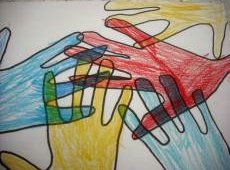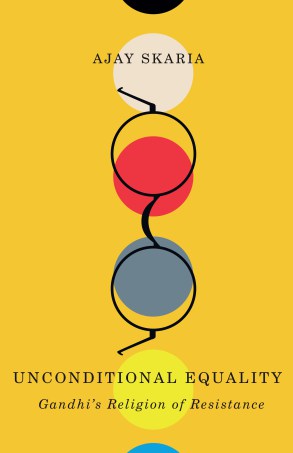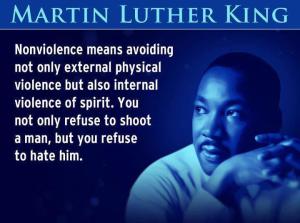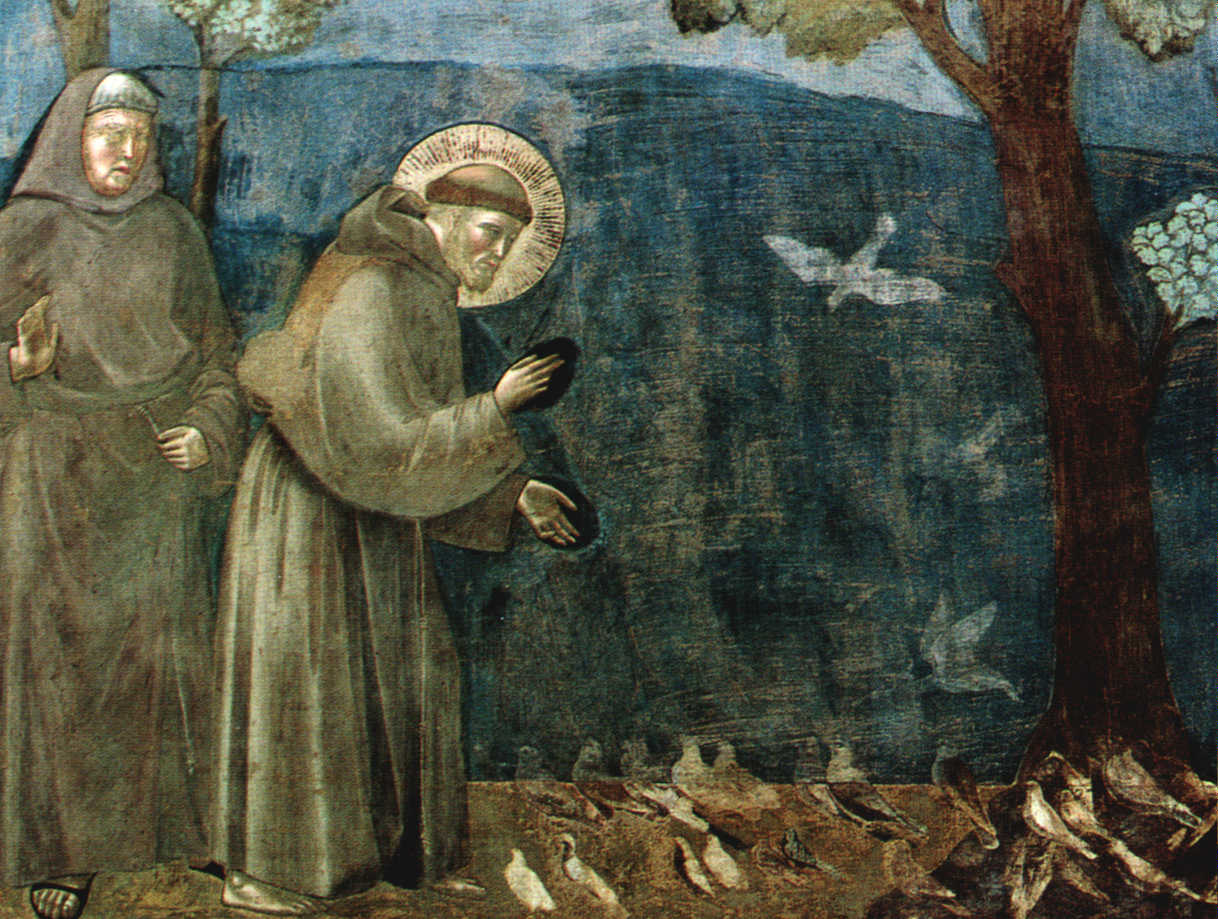by Tom Gibian

Sandy Spring School, 2nd Grade Art Work; courtesy grover.ssfs.org/~ksantori/art/2nd_grade.htm
One of the underlying principles of Gandhi’s philosophy of nonviolence is our capacity for interconnectedness, or as Gandhi was to state it, “the interconnectedness of all beings.” Interconnectedness, or connecting, is also very much at the heart of Quaker concerns.
I remember being in third grade and having to line up and pair off with a classmate to walk down the hallway to some destination beyond our classroom. At Sherwood elementary school, there might have been 29 or 30 nine-year-olds and one teacher. On the day I’m recalling, I was paired off with a kid named Sammy. I was new at Sherwood and someone warned me that Sammy had sweaty palms. As we headed down the hallway, he took my hand. His hand was sweaty, but it didn’t matter. We held hands without embarrassment. We were not self-conscious. We were little, at least relative to the world we were living in, and it could not have been more natural to reach out, to partner, to connect. Later, Sam would be one of the first friends of mine to get a high-performance muscle car in high school. That is a different story!
Read the rest of this article »
by Thomas Weber

Cover art courtesy University of Minnesota Press; upress.umn.edu
As a university student with an interest in existential philosophy, I remember struggling with Jean-Paul Sartre’s Being and Nothingness. At times there were even consecutive pages that made sense to me, but more often there were only single paragraphs separated by many pages of dense language and philosophical concepts that were beyond my comprehension. I was very thankful when I came across Sartre’s essay “Humanism as an Existentialism” and suddenly what he was trying to say came into focus and made sense. How much I lost by not comprehending the probably profounder text, I will never know. Readers of some of the latest scholarly offerings in the attempts to understand the life and thought of Mohandas Karamchand Gandhi may find themselves in a similar position while waiting for the simpler more readily graspable versions to materialise. But then, weighty philosophical concepts are weighty philosophical concepts and possibly they are not meant for a wider audience that has little desire or ability to engage in deep theoretical philosophical discourse.
Once, writings about Gandhi were biographies, often hagiographical (for example by Louis Fischer); personal reminiscences, usually hagiographical (for example by his most well known British disciple Mirabehn); and selections of the Mahatma’s thoughts grouped in various categories, generally selected by those who were followers (R.K.Prabhu and U.R.Rao, Anand Hingorani, N.K.Bose and Krishna Kripalani come to mind). Of course there were serious attempts at analysing Gandhi’s campaigns through primary archival sources (for example by Judith Brown) and more probing attempts to make sense of his world view and what led him to have it (here one could list Gopinath Dhawan, T.K.N.Unnithan and Erik Erikson). During 1969, the Gandhi birth centenary year, dozens of books appeared. More recently, although there was the occasional controversy (particularly over the writings of James Lelyveld and Jad Adams), it has become almost fashionable to ensure that Gandhi scholarship can in no way be seen as hagiographical, with writers doing their utmost to undermine the “myth of the Mahatma”, by pointing out Gandhi’s inconsistencies, his youthful elitist and even racist attitudes (for example by Desai and Vahed), his older-age, controversial experiments in sexuality, and even labelling him as a traitor in the project of the creation of modern India (too many to mention). Even more recently, however, there has been another trend where scholars with a strong theoretical bent and deep philosophical knowledge have taken the Mahatma seriously and decided to turn their attention to his life and an analysis of his praxis (and here we could mention the writings of Vinay Lal, Faisal Devji, Isabel Hofmeyr and Tridip Suhrud among a growing cohort). Ajay Skaria’s Unconditional Equality: Gandhi’s Religion of Resistance (Minneapolis: University of Minnesota Press, 2016) is a prime example of this development.
Read the rest of this article »
by Diane Lefer

Poster art courtesy fabiusmaximus.com
Editor’s Preface: Martin Luther King, Jr. called James Lawson “the world’s leading theorist and strategist of nonviolence.” To Congressman John Lewis, he is “the architect of the nonviolence movement.” Jesse Jackson calls him simply “the Teacher.” According to author David Halberstam, in his study of the Civil Rights Movement, The Children he was as responsible for sowing the seeds of change in the South as any single person, except perhaps Martin Luther King. This is the third in our series of interviews with Rev. Lawson. Please see the note at the end for further information, and acknowledgments. JG
Diane Lefer: You’ve said we have sufficient activism in this country to have a better country than we have. What are we getting wrong?
James Lawson: Activism has not been appropriating and practicing enough the Gandhian science of social change. What Gandhi called nonviolence or satyagraha – soul force – is both a way of life and a scientific, methodological approach to human disorder. It is as old as the human race and can be found in the oral and written history of the human family from way back. Then Gandhi began to put together the steps you need to take to create change. He is the father of nonviolent social change in the same way that Albert Einstein is the father of 20th-century physics – not the inventor, but the person who pulled it together.
Read the rest of this article »
by Pope Francis

Giotto, “St. Francis Preaching to the Birds”; courtesy jssincivita.com.
Editor’s Preface: The following is the official Papal message for the 50th World Day of Peace, 1 January 2017. It is, however, the first such ever devoted exclusively to nonviolence, in the tradition of Gandhi and Martin Luther King Jr. JG
1. At the beginning of this New Year, I offer heartfelt wishes of peace to the world’s peoples and nations, to heads of state and government, and to religious, civic and community leaders. I wish peace to every man, woman and child, and I pray that the image and likeness of God in each person will enable us to acknowledge one another as sacred gifts endowed with immense dignity. Especially in situations of conflict, let us respect this, our “deepest dignity”, (1) and make active nonviolence our way of life.
Read the rest of this article »








